 Image 1 of 21
Image 1 of 21

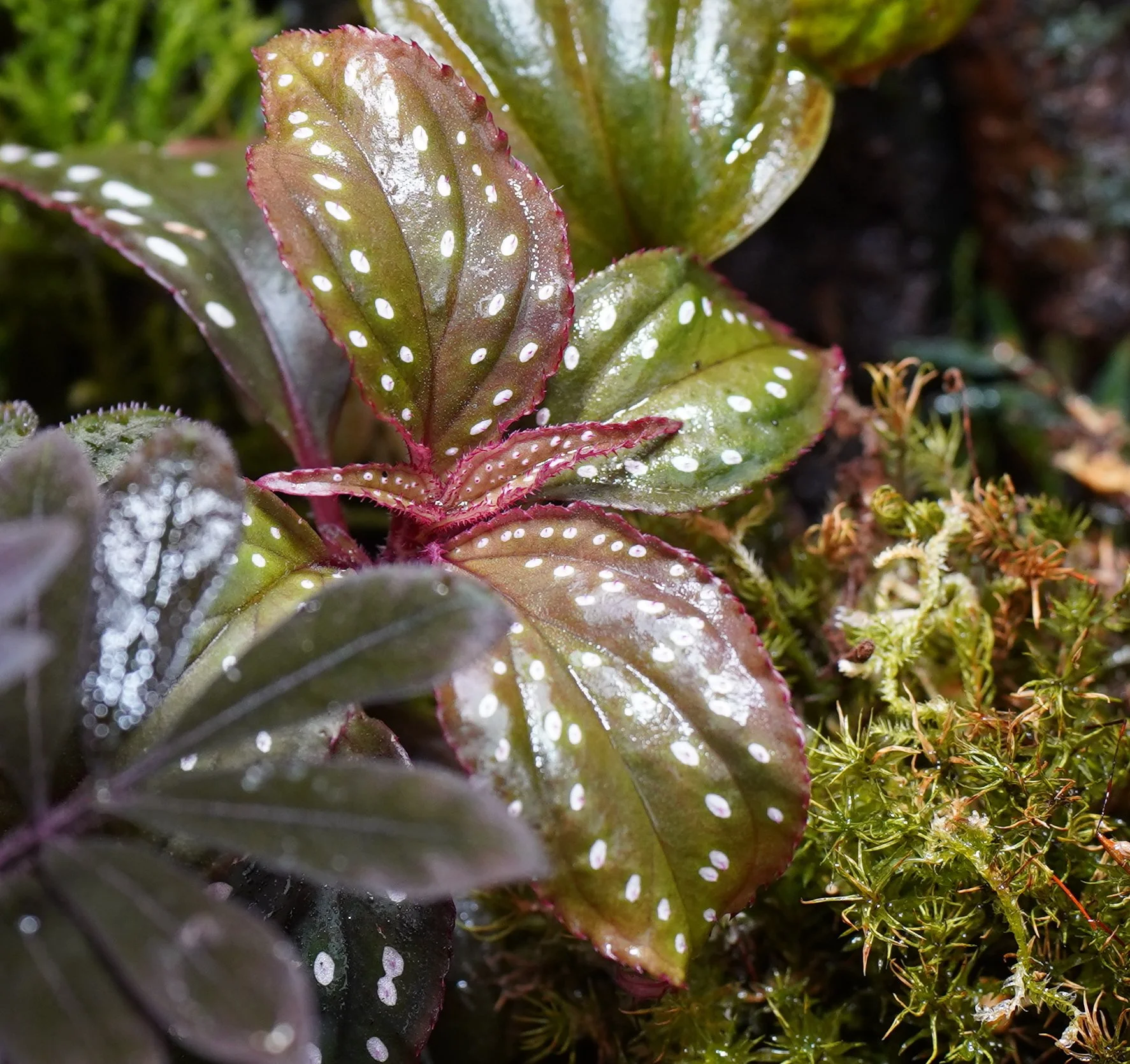 Image 2 of 21
Image 2 of 21

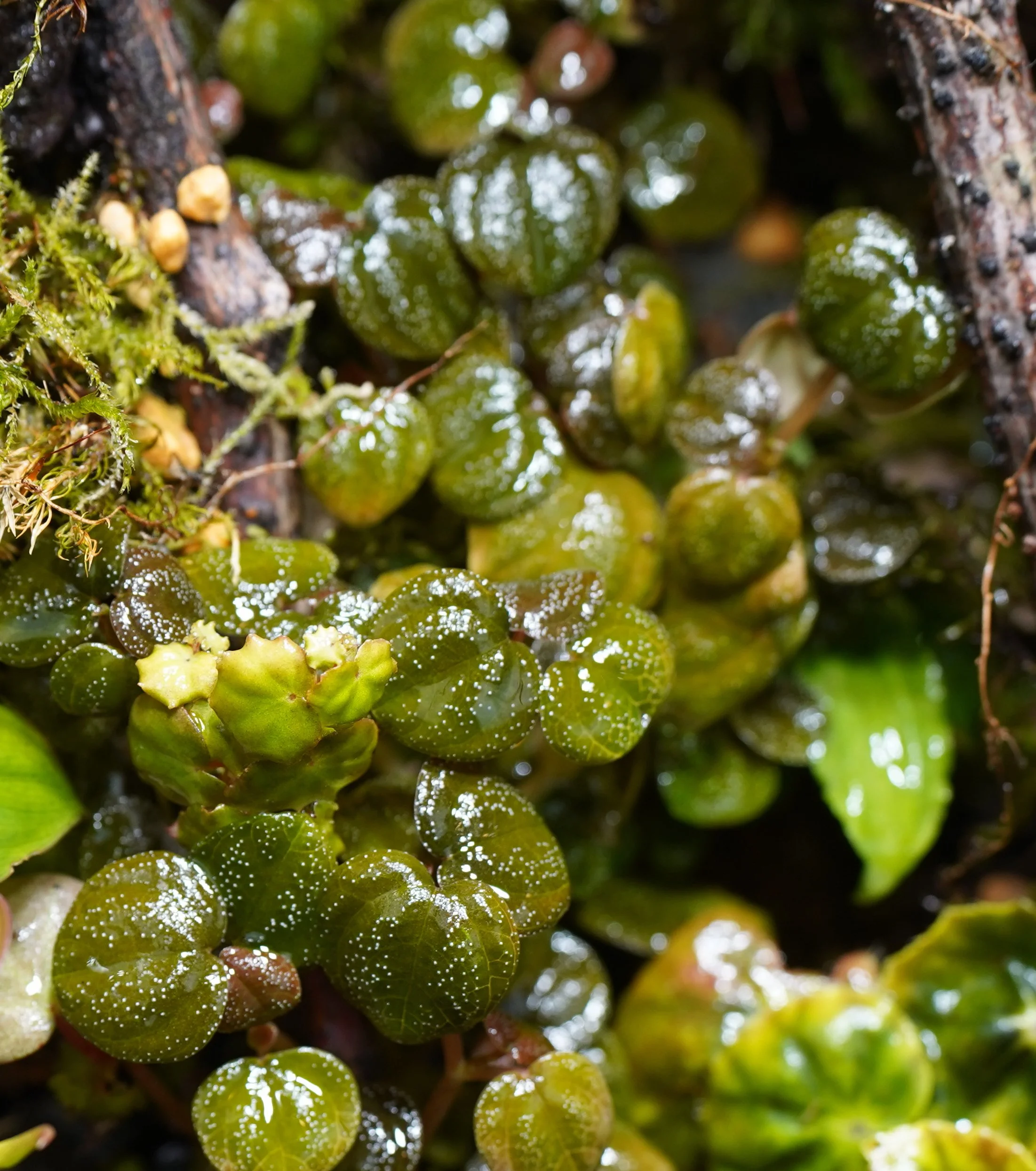 Image 3 of 21
Image 3 of 21

 Image 4 of 21
Image 4 of 21

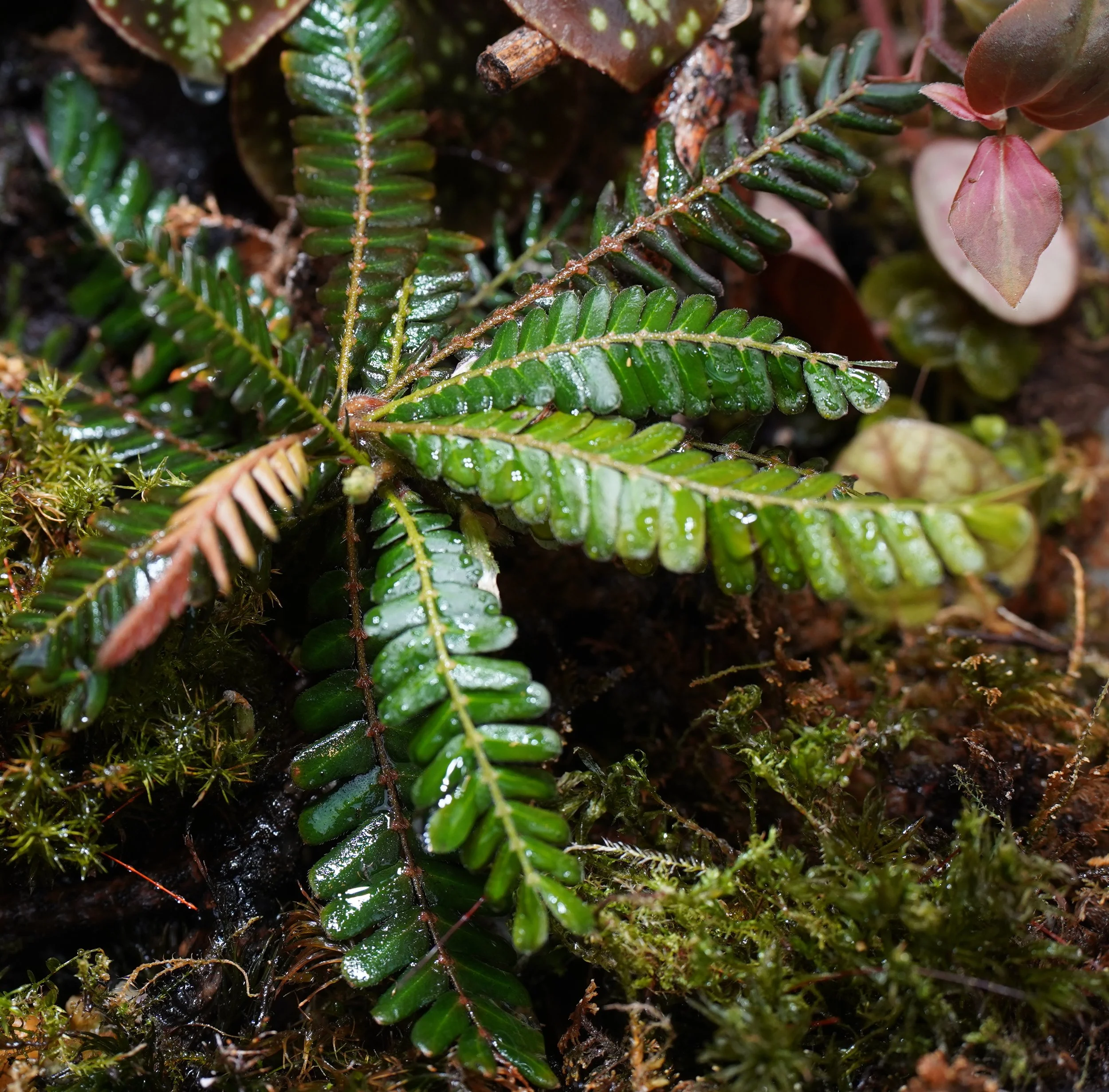 Image 5 of 21
Image 5 of 21

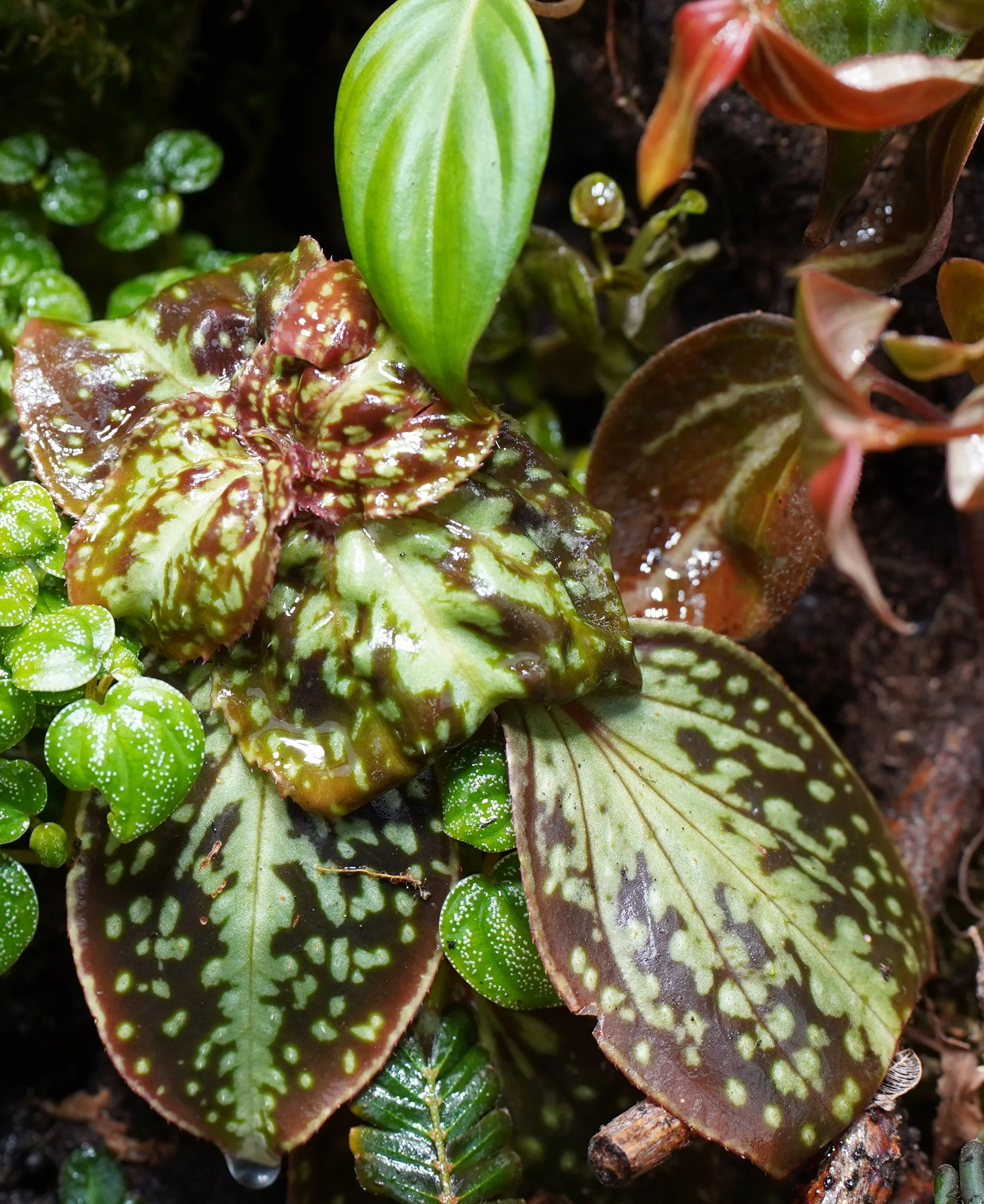 Image 6 of 21
Image 6 of 21

 Image 7 of 21
Image 7 of 21

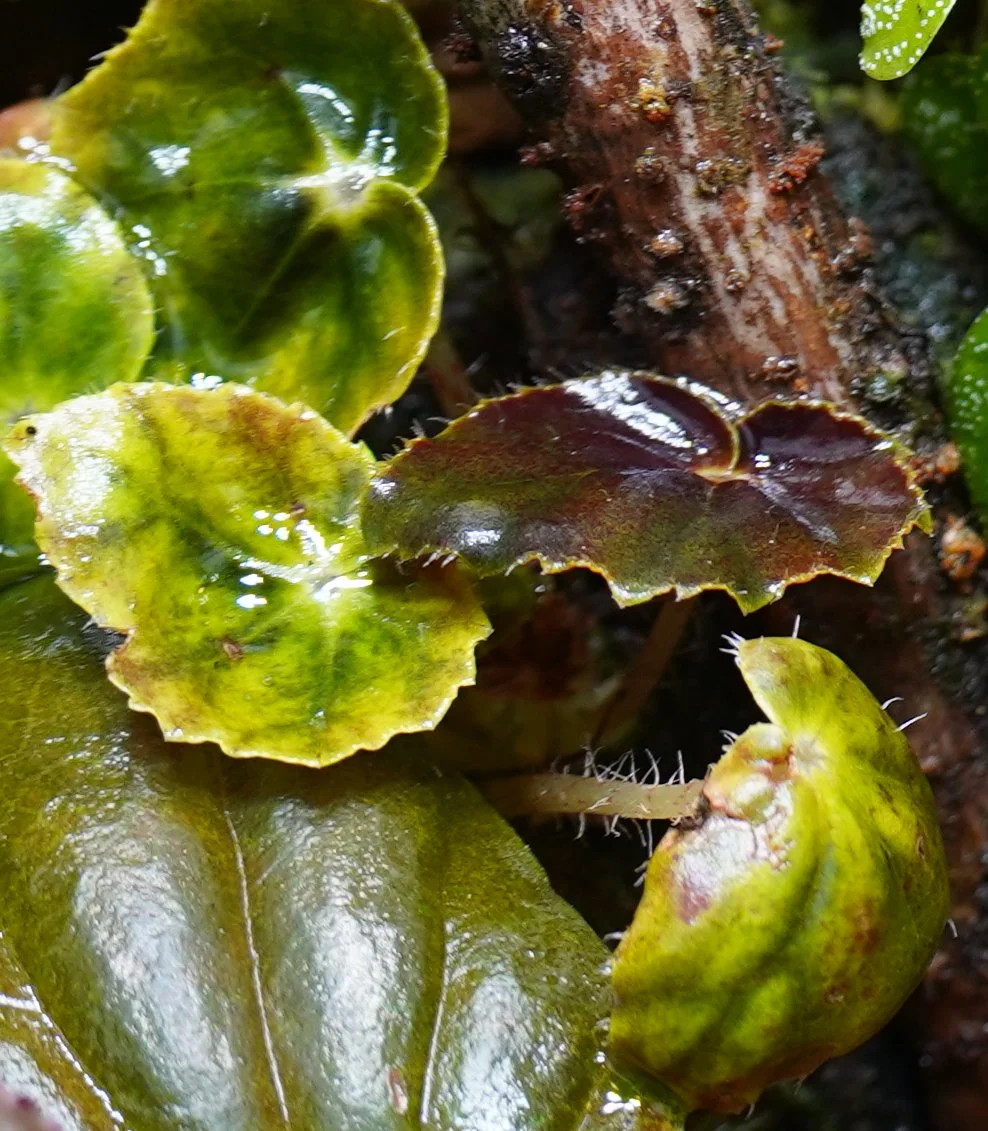 Image 8 of 21
Image 8 of 21

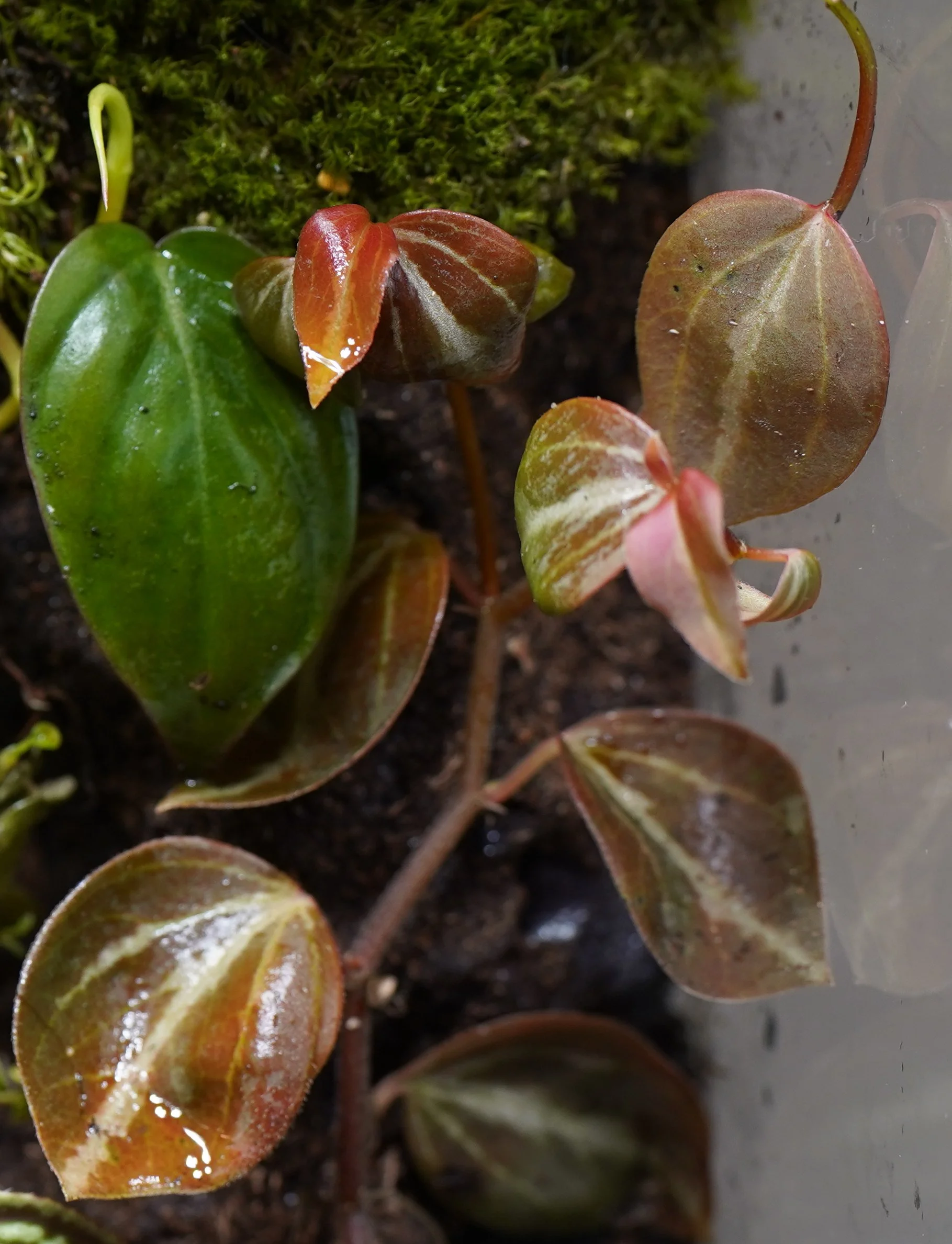 Image 9 of 21
Image 9 of 21

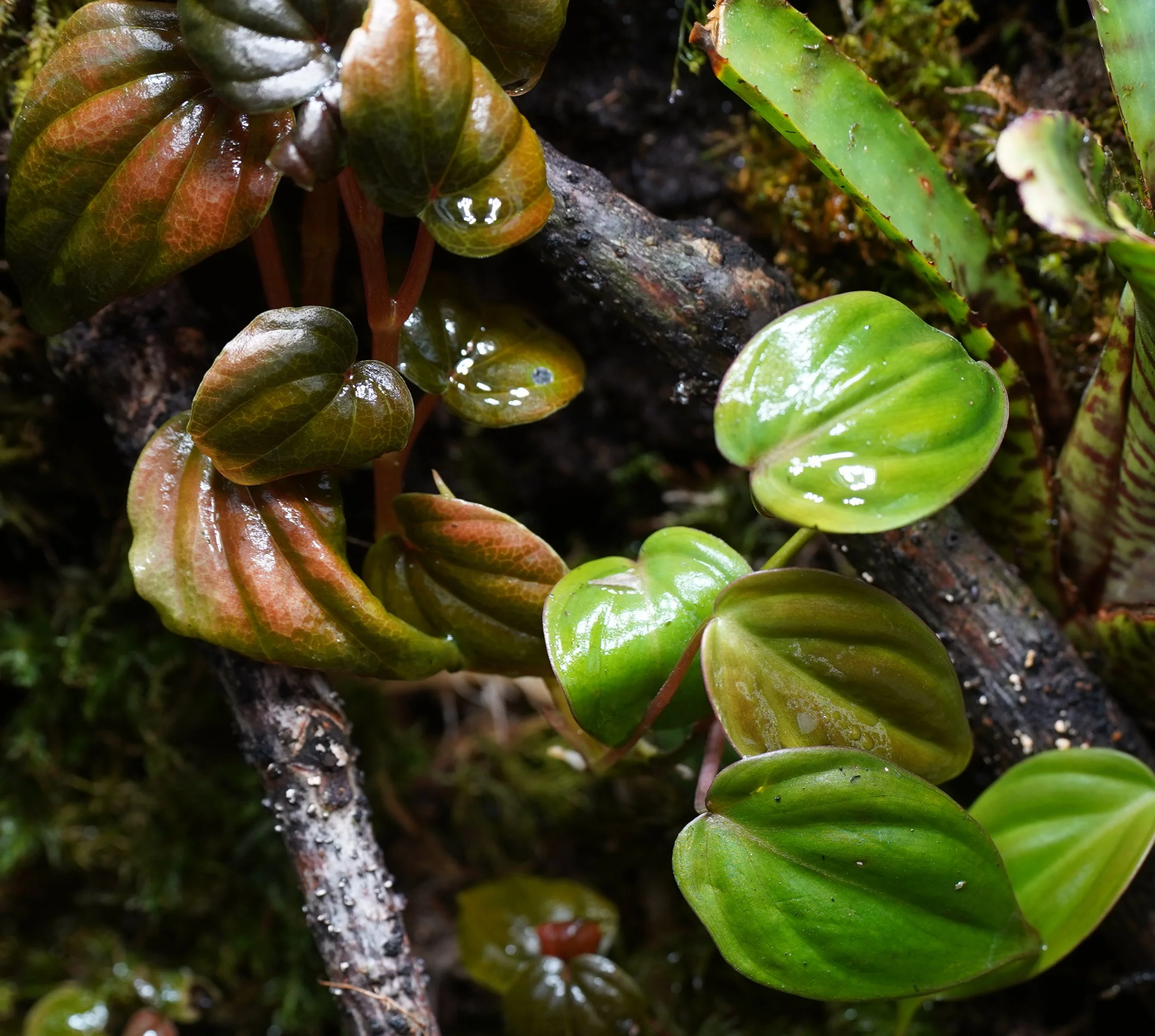 Image 10 of 21
Image 10 of 21

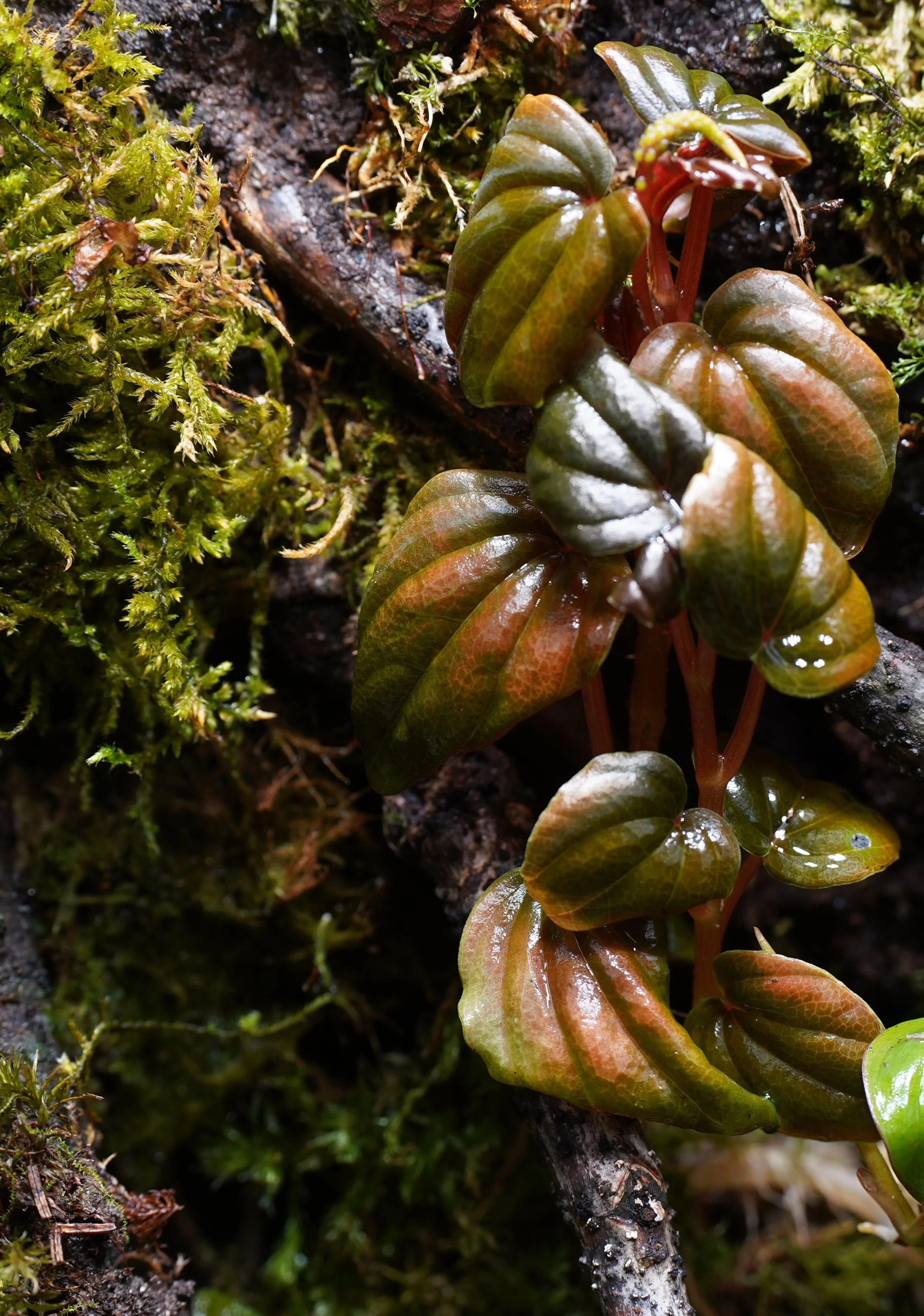 Image 11 of 21
Image 11 of 21

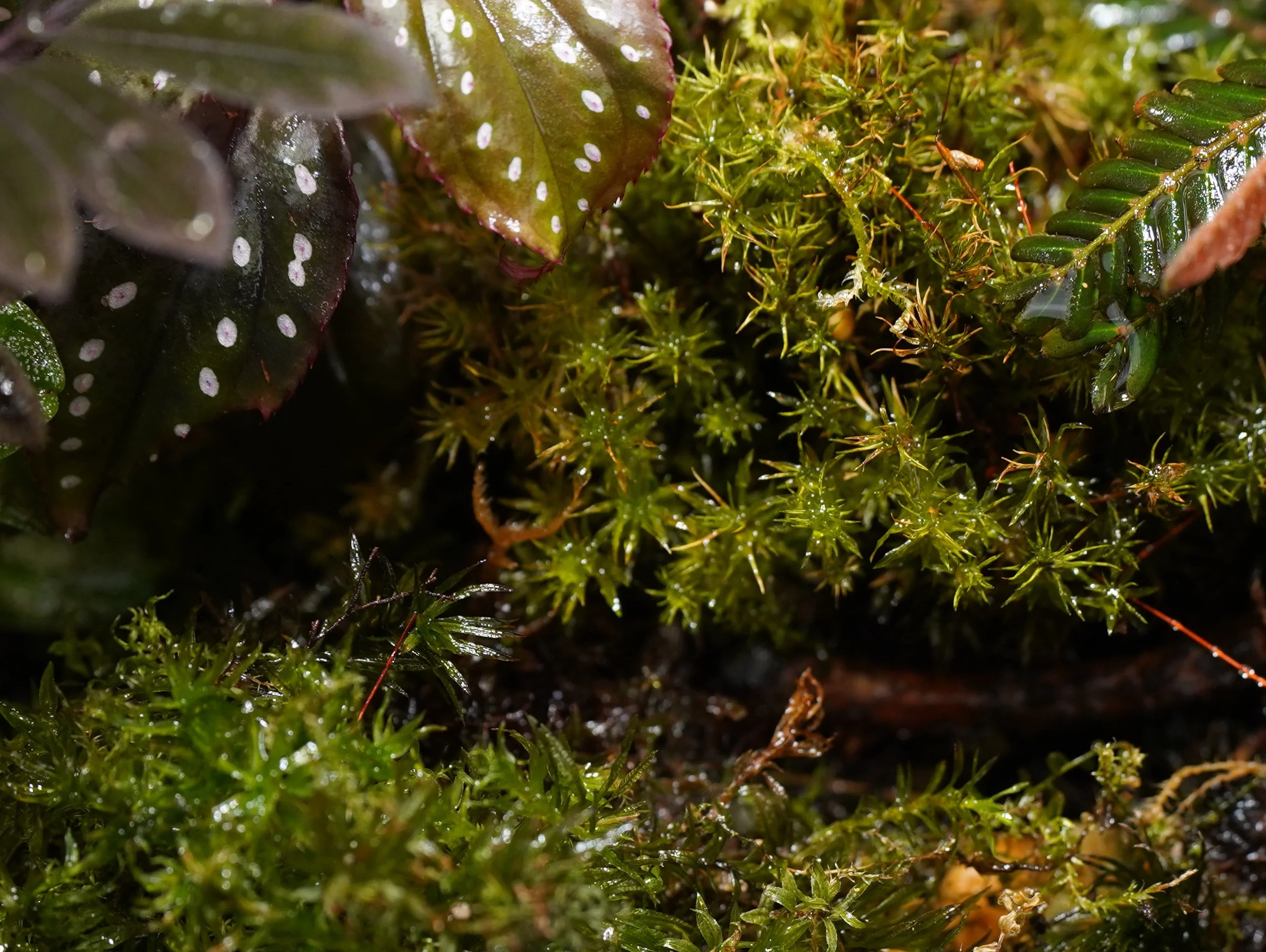 Image 12 of 21
Image 12 of 21

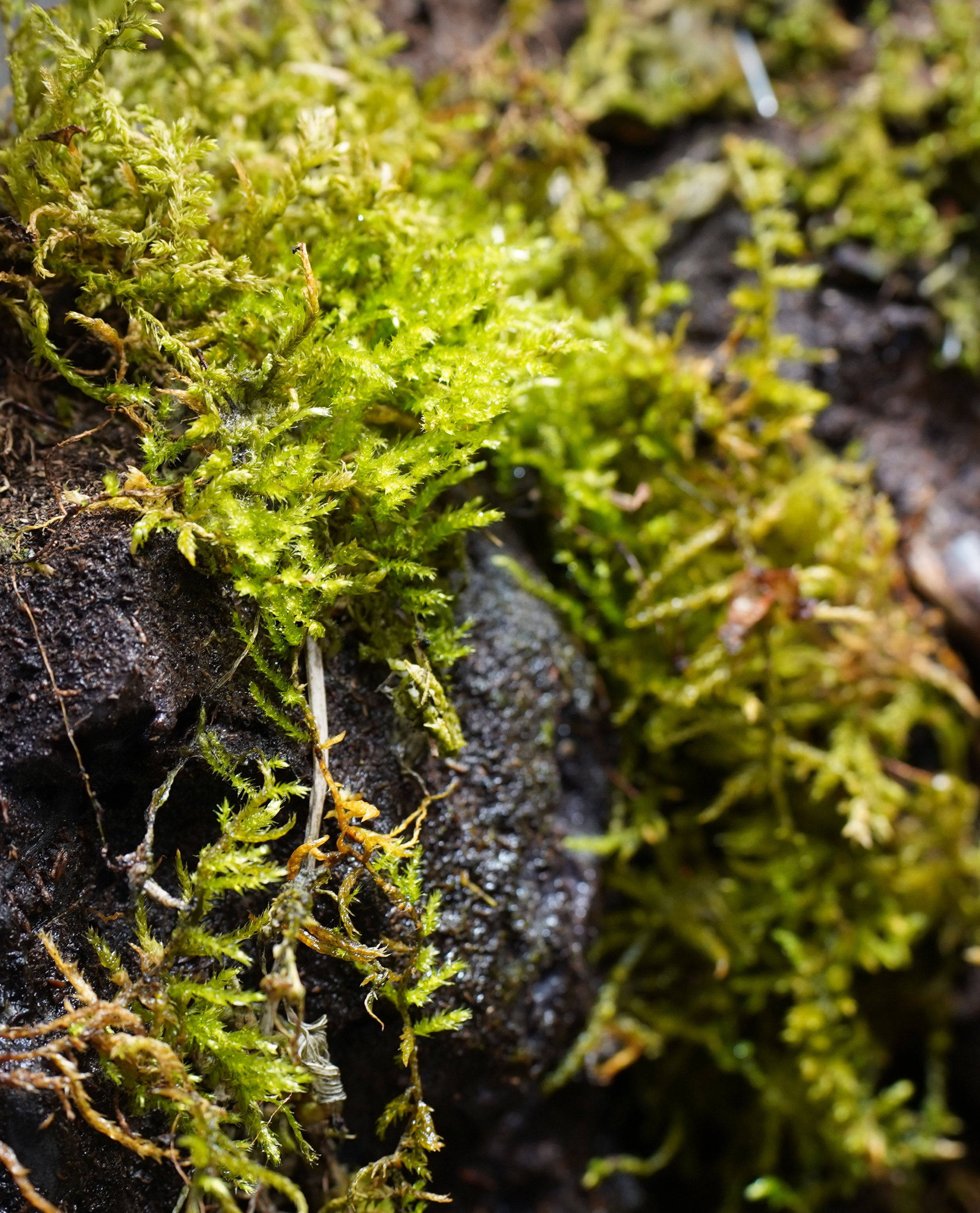 Image 13 of 21
Image 13 of 21

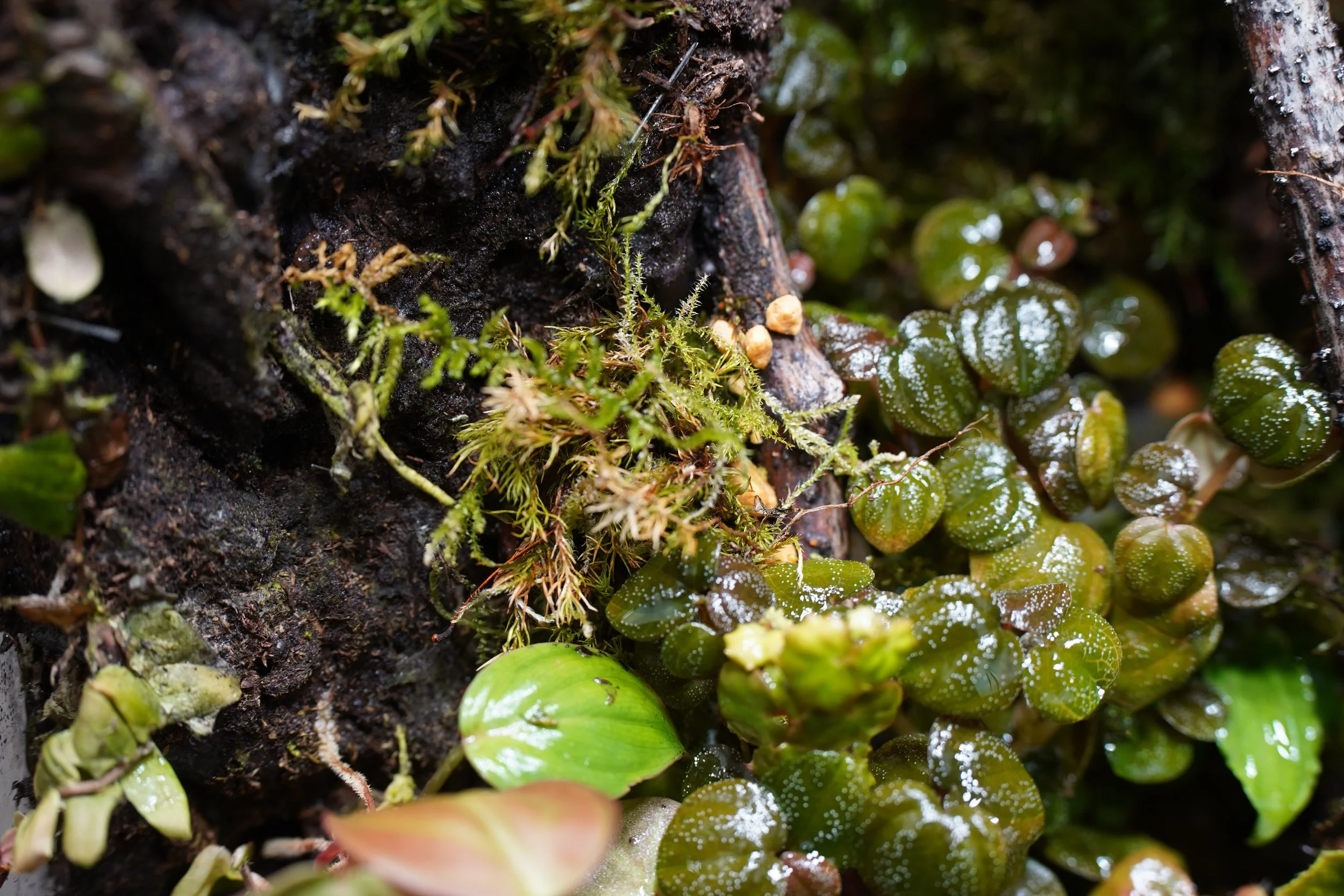 Image 14 of 21
Image 14 of 21

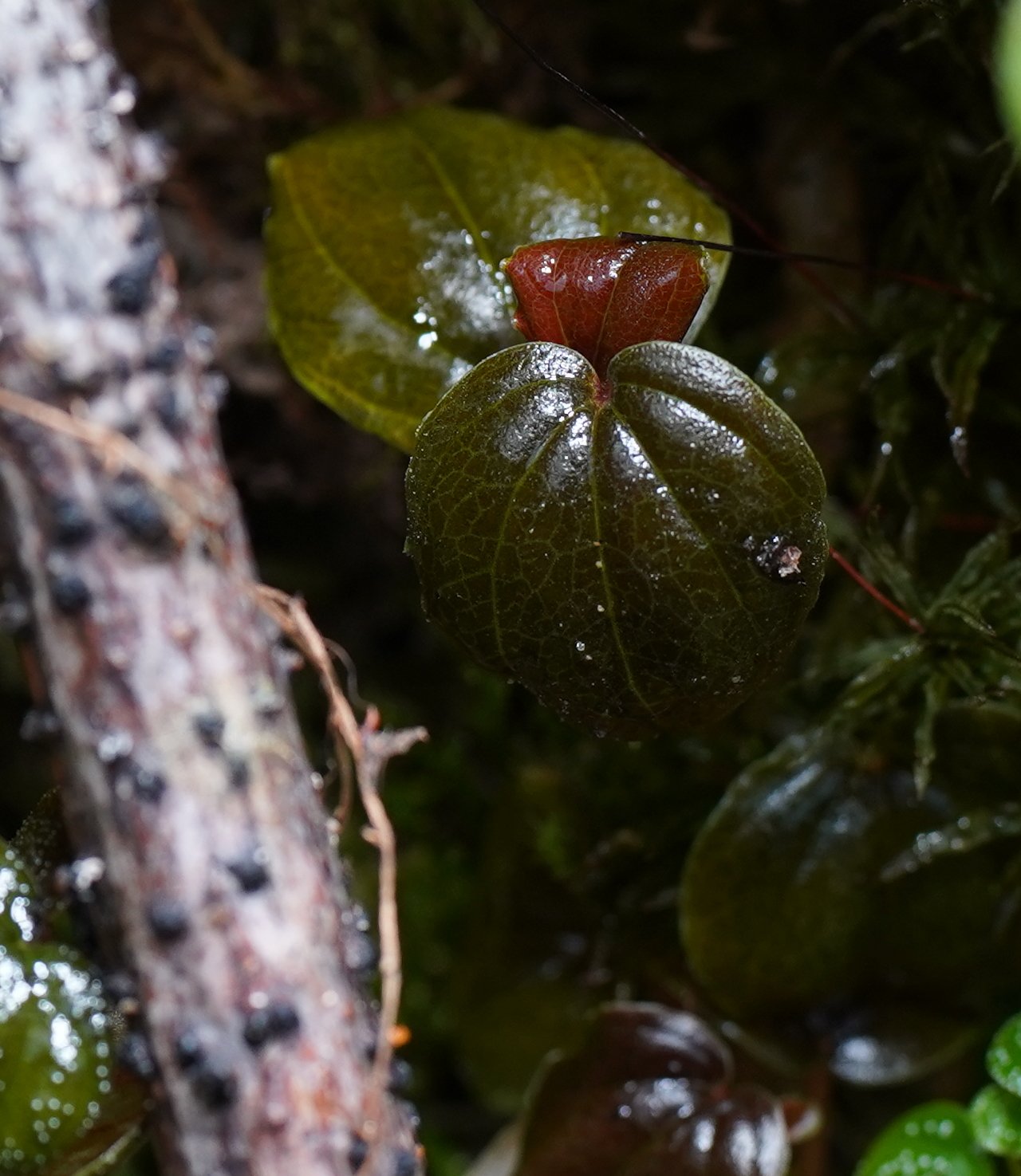 Image 15 of 21
Image 15 of 21

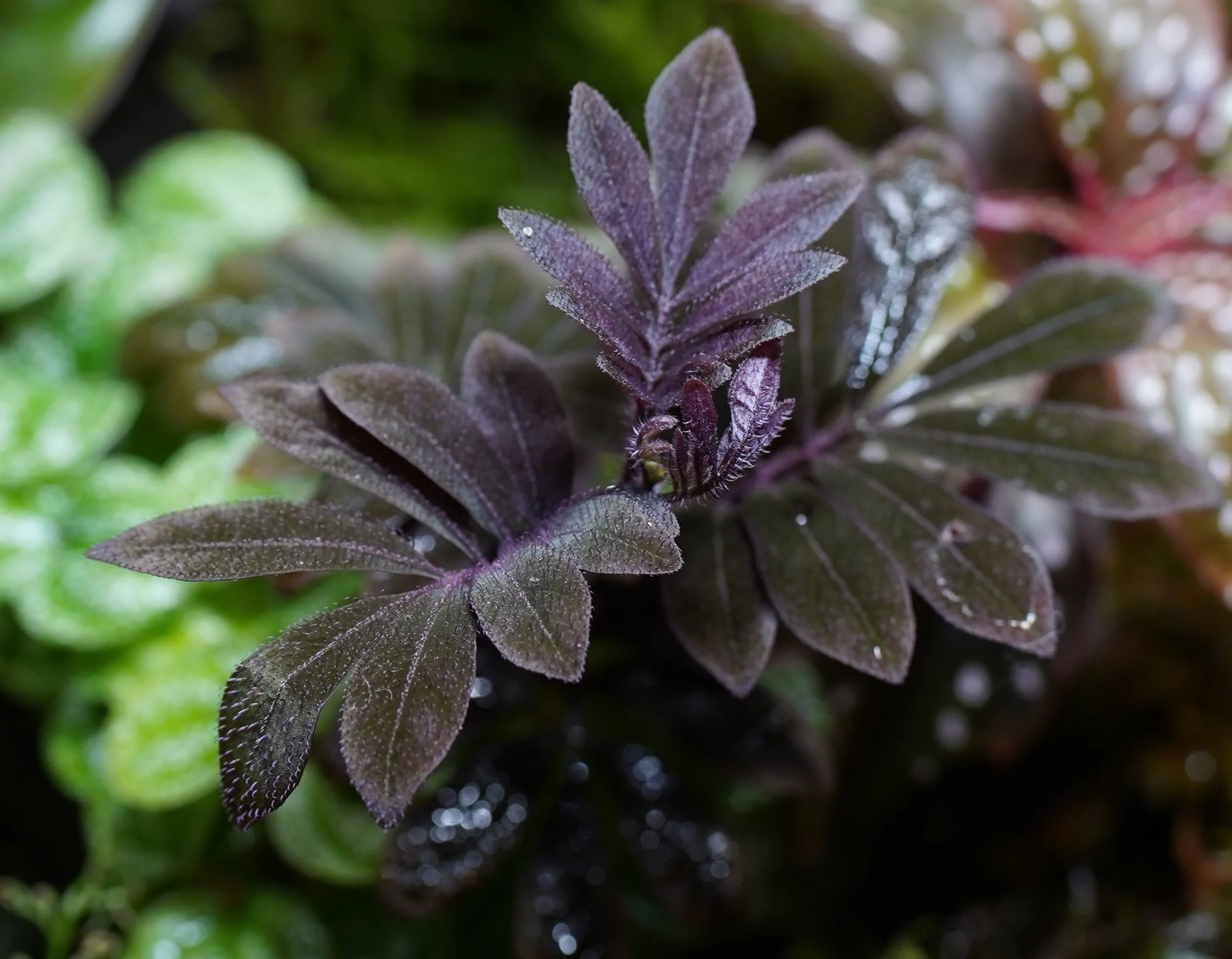 Image 16 of 21
Image 16 of 21

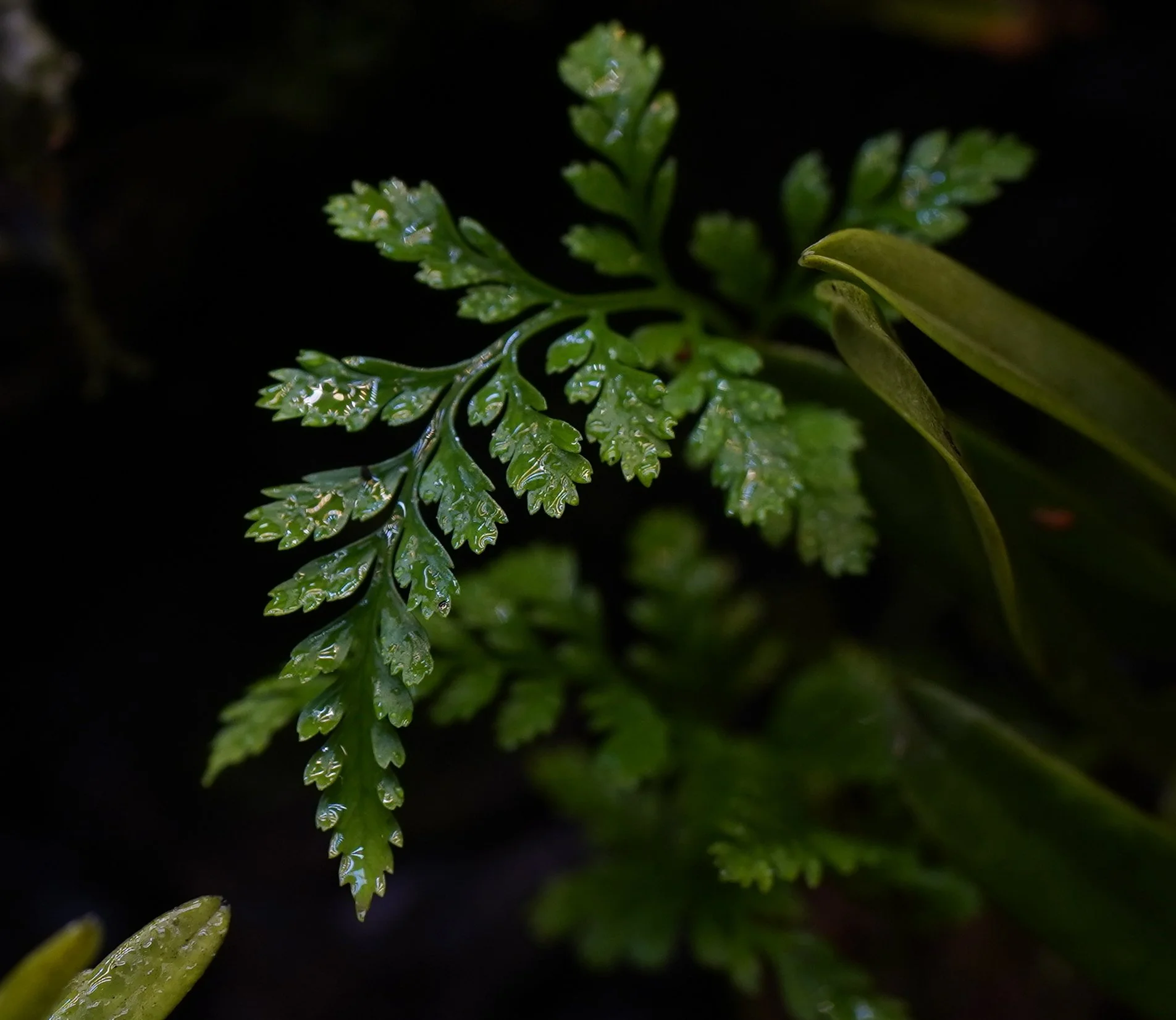 Image 17 of 21
Image 17 of 21

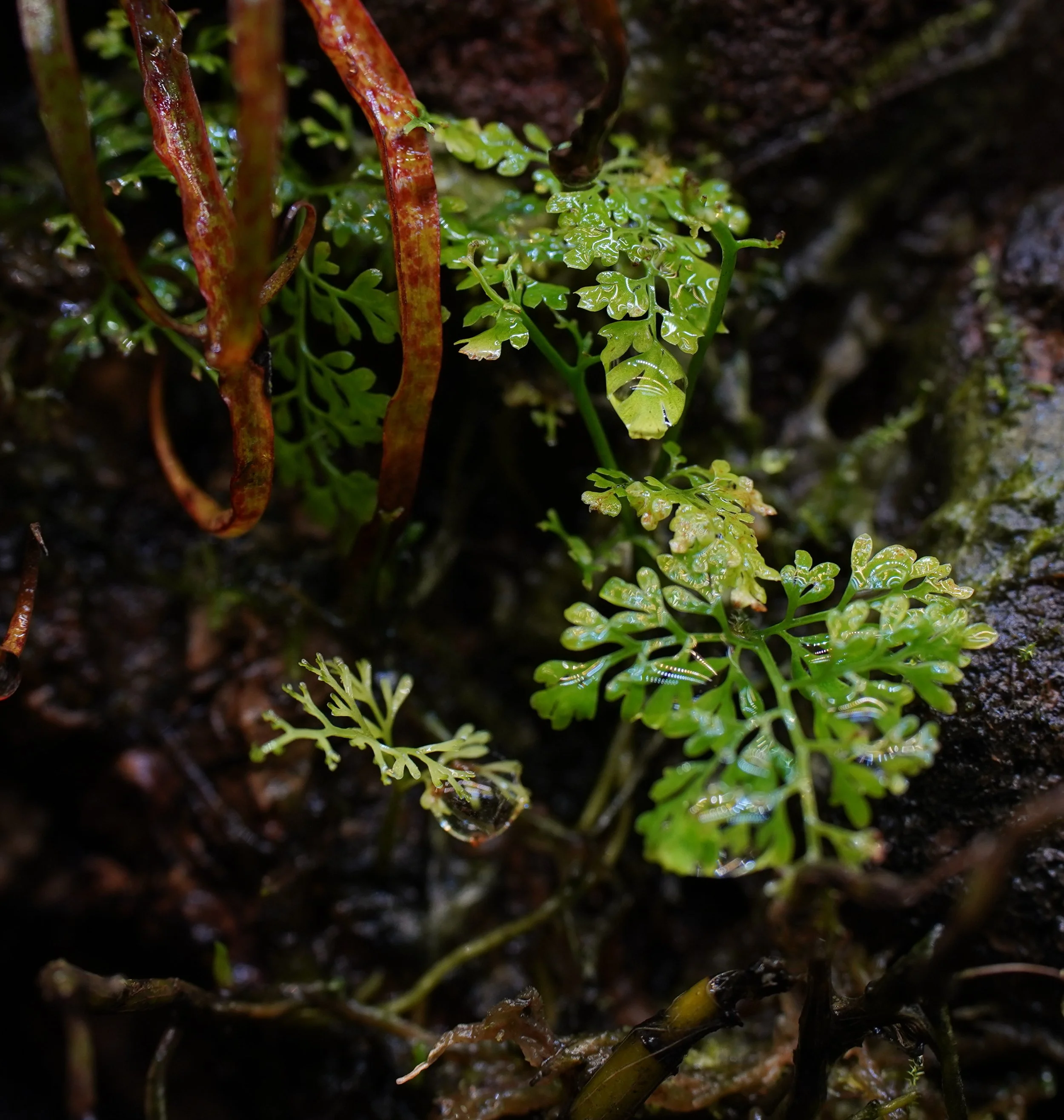 Image 18 of 21
Image 18 of 21

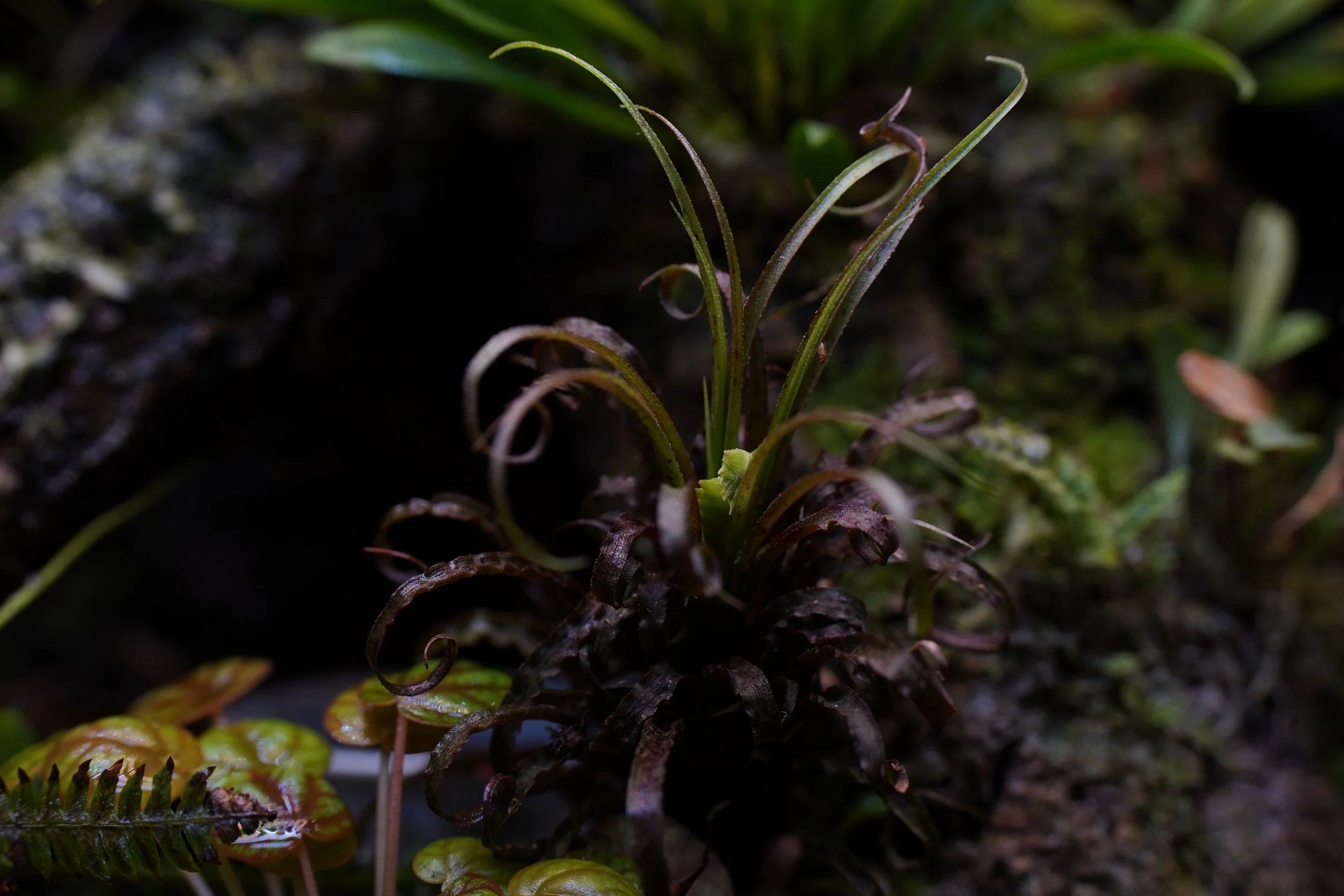 Image 19 of 21
Image 19 of 21

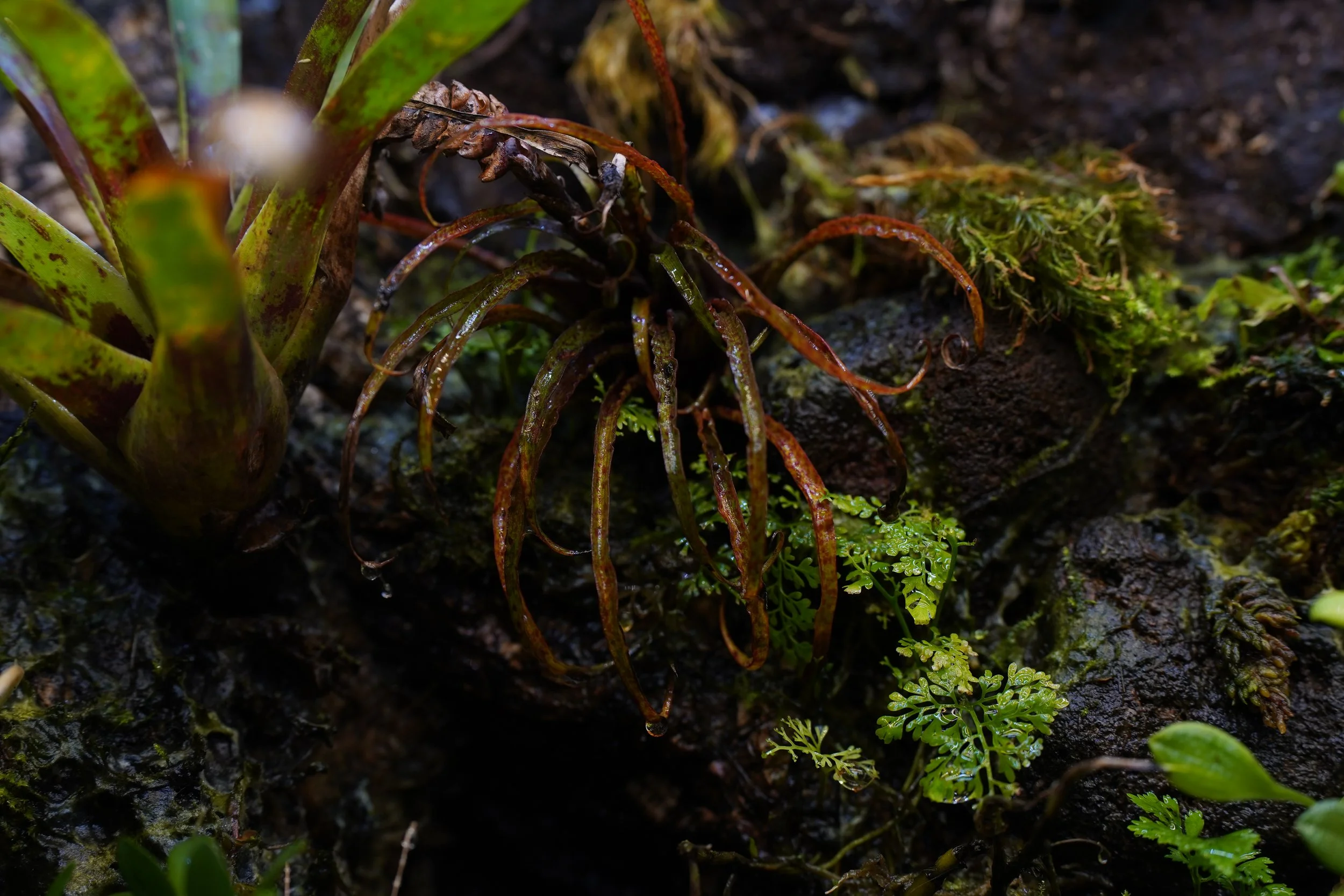 Image 20 of 21
Image 20 of 21

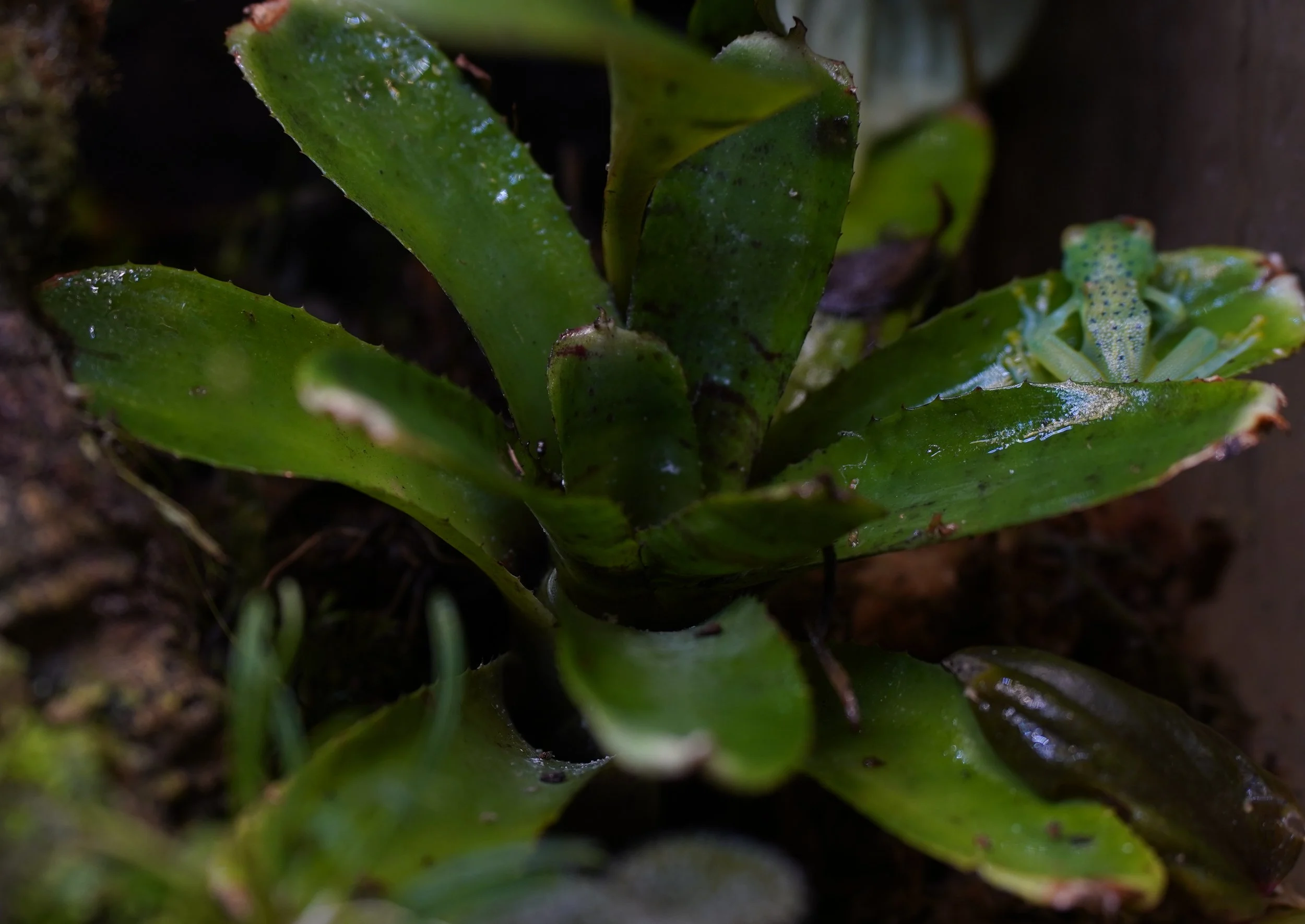 Image 21 of 21
Image 21 of 21






















' Jungle Amor '
Sonerila sp. Starry Sky : Sonerila sp. Starry Sky is an extraordinary species out of the forests of Indonesia. These have to be kept in terrarium conditions, upon arrival it needs to immediately be placed into a terrarium to be in a high humidity environment. The colors on this species are like no others available! The foliage on this matures into a beautiful dark green that fades to almost white at the mid rib and dark pink on the leaf margins.
Peperomia antoniana : This gem is a small terrestrial species from Ecuador. Grows best in most but well drained substrate in high humidity and low to moderate light.
Begonia lichenora : Begonia bogneri is a charming, small creeping species from Borneo that flourishes in high humidity. It grows best on a moist sphagnum substrate with low light conditions.
Peperomia antoniana Green : Peperomia antoniana 'Green' is a rare, epiphytic or terrestrial houseplant native to Ecuador and Peru, prized for its striking emerald-green, white-speckled, round leaves about 3/4 of an inch in diameter. This "bushy" Peperomia prefers high humidity, warm temperatures, and bright, indirect light but can be finicky, requiring a moist but well-draining substrate with components like bark, perlite, and minimal sphagnum moss.
Biophytum sp. Ecuador : A species of miniature, palm-like plants native to Ecuador, known for its sensitive, mimosa-like leaves that fold up at night or when stressed. This terrestrial plant thrives in warm, high-moisture, terrarium conditions, similar to its natural habitat in marshy areas and near streams. It requires consistently moist, well-draining soil, filtered sunlight, and can be propagated by harvesting its small, often pink or purplish, seeds.
Sonerila cantonensis : Sonerila are a diverse group of plants in the Melastomaceae family distinguished by having flowers with three petals (as opposed to five for most other plants in this group). There seems to be alot of variation within a species, and so the ID of aff.cantonensis is a guess. Sonerilas are an Asian genus that make excellent terrarium plants. This species is very robust and easily kept provided it does not dry out. It seems to be nearly always in bloom.
Philodendron sp. Loreto : The soft yellow/green foliage of this modest sized Philodendron is especially nice when complimented by the peach and salmon hues present in new growth. Native to the Iquitos region, Amazonian Peru. Will creep nicely and tightly to a background or a branch.
Peperomia sp. Dark Pongo : Peperomia sp. Dark Pongo is a modest-sized terrestrial species from the Yurimaguas lowlands of Peru. Our founding stock originated from a now razed patch of forest that stood near Pongo De Caynarachi. This species grows intermittently throughout the region. It is hard to detect with its dark foliage offering little contrast against the forest floor in the deep shade we most often have found it growing in.
Hydrocoytle sp. Northern Peru : This charming plant originates from the cloud forests of northern Peru, where it was discovered along the banks of a small roadside stream. It grows well as a terrestrial species and tolerates a wide range of light, from low to bright conditions. With adequate moisture, it will climb and spread across the terrarium floor.
Peperomia sp. Colombia : Peperomia sp. “Colombia” is a striking peperomia believed to originate from central Colombia. When grown in an open space on the floor of a terrarium, it forms an attractive, compact rosette. It thrives in a moist yet well-draining substrate. First discovered near the Buena Ventura region along the Pacific coastal rainforest, this understory species is prized for its vibrant foliage patterns, making it a standout choice for indoor plant enthusiasts.
Variety of native mosses :This rainforest terrarium is carpeted with a variety of native mosses, creating a rich, layered green landscape. Thriving in high humidity and gentle light, the mosses form a soft, natural ground cover that helps retain moisture, stabilize the microclimate, and provide an ideal habitat for plants and small organisms, bringing a vibrant and harmonious look to the entire enclosure.
Rhodospatha sp. Pink Ecuador : This compact Ecuadorian plant features softly glaucous leaves accented with delicate pink undertones. It thrives in medium to low light, making it an excellent choice for terrariums or shaded indoor settings.
Solanum uleanum : Solanum uleanum is a tropical vine native to the rainforests of Brazil, Peru, Colombia, and Ecuador. It is part of the Solanaceae family, which includes a variety of well-known plants, such as tomatoes and nightshades. This species is especially notable for its visually striking foliage. The young leaves of Solanum uleanum emerge in a vivid, almost neon purple, gradually maturing into deep green.
Asplenium sp. Chazuta : This charming miniature Asplenium originates from the Chazuta region of Peru. Despite its delicate appearance, it produces mature fronds often under 6 cm long, with new growth emerging gracefully from slender rhizomes.
Racinaea crispa : A small plant (to 6 inches) with a bulbous base and leaves which have endless twists, wrinkles and curls. Green with darker markings, sometimes almost appearing black, with a delicate yellow inflorescence.
Neoregelia rubrifolia : Neoregelia rubrifolia is a vibrant, hardy mini bromeliad native to rainforest canopies. Compact at about 6–10″ (14–25 cm), it thrives in humid terrariums or vivariums and is safe for most amphibians and tropical reptiles. As an epiphyte, it absorbs nutrients from rainwater and debris rather than soil, and shows brighter colors under strong light. Ideal for dart frog setups, its leaf cups provide natural sites for egg laying and tadpole rearing.
Sonerila sp. Starry Sky : Sonerila sp. Starry Sky is an extraordinary species out of the forests of Indonesia. These have to be kept in terrarium conditions, upon arrival it needs to immediately be placed into a terrarium to be in a high humidity environment. The colors on this species are like no others available! The foliage on this matures into a beautiful dark green that fades to almost white at the mid rib and dark pink on the leaf margins.
Peperomia antoniana : This gem is a small terrestrial species from Ecuador. Grows best in most but well drained substrate in high humidity and low to moderate light.
Begonia lichenora : Begonia bogneri is a charming, small creeping species from Borneo that flourishes in high humidity. It grows best on a moist sphagnum substrate with low light conditions.
Peperomia antoniana Green : Peperomia antoniana 'Green' is a rare, epiphytic or terrestrial houseplant native to Ecuador and Peru, prized for its striking emerald-green, white-speckled, round leaves about 3/4 of an inch in diameter. This "bushy" Peperomia prefers high humidity, warm temperatures, and bright, indirect light but can be finicky, requiring a moist but well-draining substrate with components like bark, perlite, and minimal sphagnum moss.
Biophytum sp. Ecuador : A species of miniature, palm-like plants native to Ecuador, known for its sensitive, mimosa-like leaves that fold up at night or when stressed. This terrestrial plant thrives in warm, high-moisture, terrarium conditions, similar to its natural habitat in marshy areas and near streams. It requires consistently moist, well-draining soil, filtered sunlight, and can be propagated by harvesting its small, often pink or purplish, seeds.
Sonerila cantonensis : Sonerila are a diverse group of plants in the Melastomaceae family distinguished by having flowers with three petals (as opposed to five for most other plants in this group). There seems to be alot of variation within a species, and so the ID of aff.cantonensis is a guess. Sonerilas are an Asian genus that make excellent terrarium plants. This species is very robust and easily kept provided it does not dry out. It seems to be nearly always in bloom.
Philodendron sp. Loreto : The soft yellow/green foliage of this modest sized Philodendron is especially nice when complimented by the peach and salmon hues present in new growth. Native to the Iquitos region, Amazonian Peru. Will creep nicely and tightly to a background or a branch.
Peperomia sp. Dark Pongo : Peperomia sp. Dark Pongo is a modest-sized terrestrial species from the Yurimaguas lowlands of Peru. Our founding stock originated from a now razed patch of forest that stood near Pongo De Caynarachi. This species grows intermittently throughout the region. It is hard to detect with its dark foliage offering little contrast against the forest floor in the deep shade we most often have found it growing in.
Hydrocoytle sp. Northern Peru : This charming plant originates from the cloud forests of northern Peru, where it was discovered along the banks of a small roadside stream. It grows well as a terrestrial species and tolerates a wide range of light, from low to bright conditions. With adequate moisture, it will climb and spread across the terrarium floor.
Peperomia sp. Colombia : Peperomia sp. “Colombia” is a striking peperomia believed to originate from central Colombia. When grown in an open space on the floor of a terrarium, it forms an attractive, compact rosette. It thrives in a moist yet well-draining substrate. First discovered near the Buena Ventura region along the Pacific coastal rainforest, this understory species is prized for its vibrant foliage patterns, making it a standout choice for indoor plant enthusiasts.
Variety of native mosses :This rainforest terrarium is carpeted with a variety of native mosses, creating a rich, layered green landscape. Thriving in high humidity and gentle light, the mosses form a soft, natural ground cover that helps retain moisture, stabilize the microclimate, and provide an ideal habitat for plants and small organisms, bringing a vibrant and harmonious look to the entire enclosure.
Rhodospatha sp. Pink Ecuador : This compact Ecuadorian plant features softly glaucous leaves accented with delicate pink undertones. It thrives in medium to low light, making it an excellent choice for terrariums or shaded indoor settings.
Solanum uleanum : Solanum uleanum is a tropical vine native to the rainforests of Brazil, Peru, Colombia, and Ecuador. It is part of the Solanaceae family, which includes a variety of well-known plants, such as tomatoes and nightshades. This species is especially notable for its visually striking foliage. The young leaves of Solanum uleanum emerge in a vivid, almost neon purple, gradually maturing into deep green.
Asplenium sp. Chazuta : This charming miniature Asplenium originates from the Chazuta region of Peru. Despite its delicate appearance, it produces mature fronds often under 6 cm long, with new growth emerging gracefully from slender rhizomes.
Racinaea crispa : A small plant (to 6 inches) with a bulbous base and leaves which have endless twists, wrinkles and curls. Green with darker markings, sometimes almost appearing black, with a delicate yellow inflorescence.
Neoregelia rubrifolia : Neoregelia rubrifolia is a vibrant, hardy mini bromeliad native to rainforest canopies. Compact at about 6–10″ (14–25 cm), it thrives in humid terrariums or vivariums and is safe for most amphibians and tropical reptiles. As an epiphyte, it absorbs nutrients from rainwater and debris rather than soil, and shows brighter colors under strong light. Ideal for dart frog setups, its leaf cups provide natural sites for egg laying and tadpole rearing.

